Rudolph Wendelin: From KU to Smokey Bear
September 10th, 2019Smokey Bear recently celebrated his 75th birthday. Rudolph Wendelin, a KU student in the late 1920s and early 1930s, worked for the United States Forest Service and created Smokey Bear artwork over the length of his career.
According to the Forest History Society that houses his archives, Wendelin was born in Ludell, Kansas, and attended the University of Kansas School of Architecture, as well as art schools in Milwaukee and Washington, D.C. After serving in World War II, Wendelin “was given responsibility for the Smokey Bear project and proceeded to create hundreds of Smokey representations that highlighted natural resources conservation and forest fire prevention.”
In honor of Mr. Wendelin and Smokey Bear, we would like to highlight some of the examples of his artwork that are housed in KU’s University Archives. His artistic promise can clearly be seen in the samples featured here.
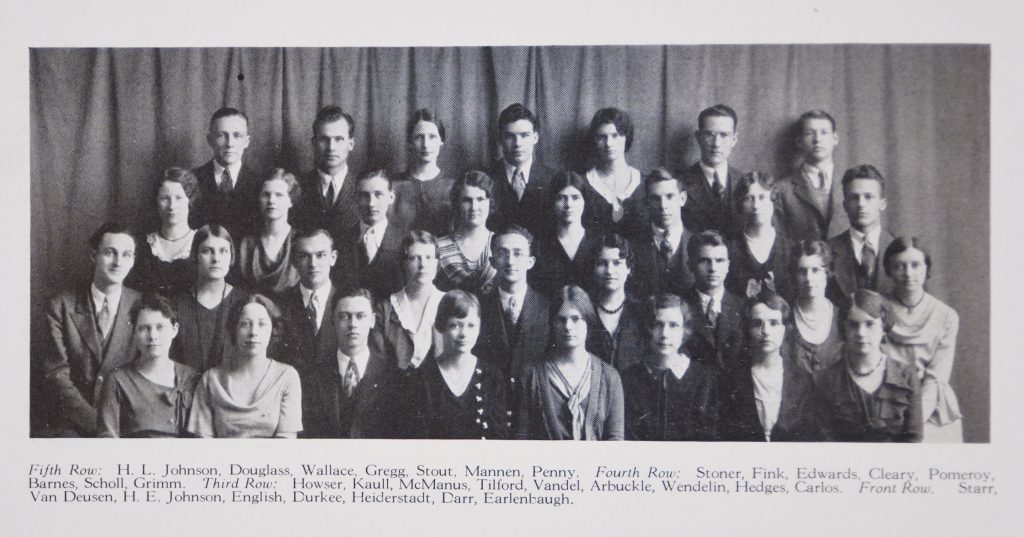
Rudolph Wendelin studied in the department of Architecture and Architectural Engineering. In a scrapbook from the School of Architecture and Architectural Engineering that spans the years 1913 through the early 1930s, there are many examples of Wendelin’s caricatures.
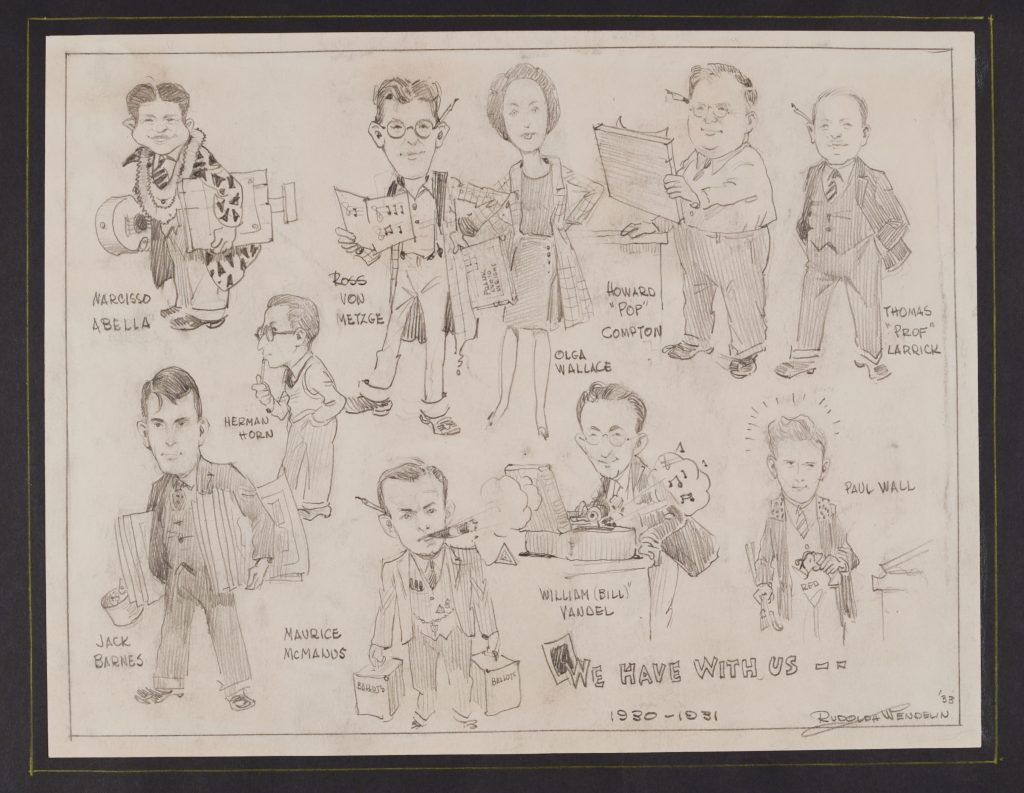
Wendelin captures student life, including the annual Architect’s Party. In 1932 the theme was “Depression.” The description in the scrapbook, most likely written by Wendelin, indicates that “costumes and decorations were in keeping with this feeling [of Depression] . . .” The event featured “singing and dancing by Bob Mann’s chorus, juggling of balls and jokes by Prof. Beal, and tap dancing by Ruth Pyle . . . Refreshments were served the hungry mob, and dancing followed–to depression music–the radio.”
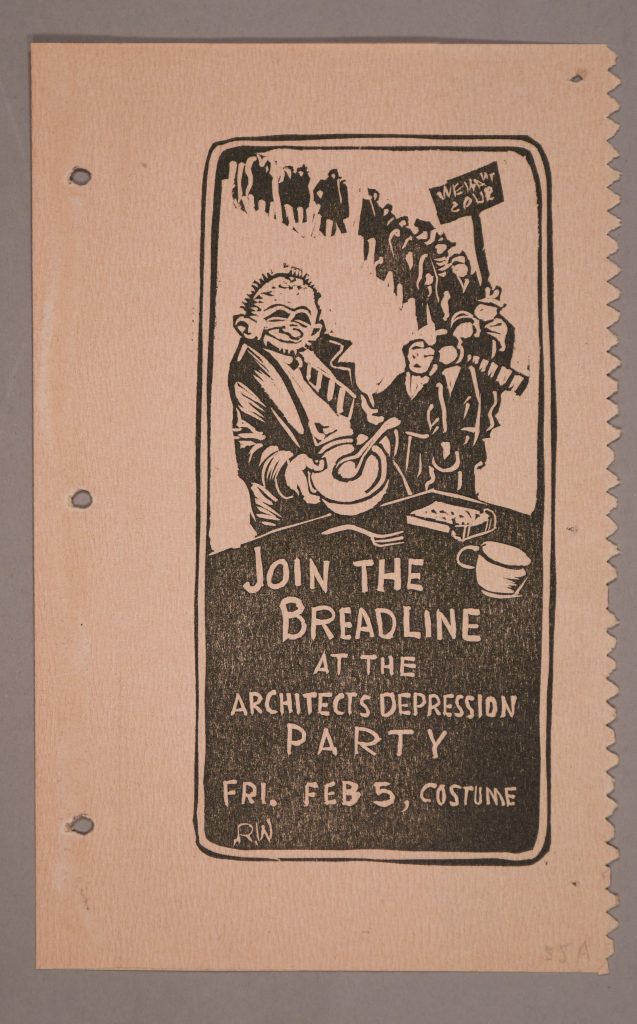
Wendelin’s work was also included in the Humor section at the end of the 1930, 1931, and 1932 Jayhawker yearbooks. In 1931 he depicted the “Hill’s Hottest He,” which features Sennett Kirk as the most desirable bachelor on campus.
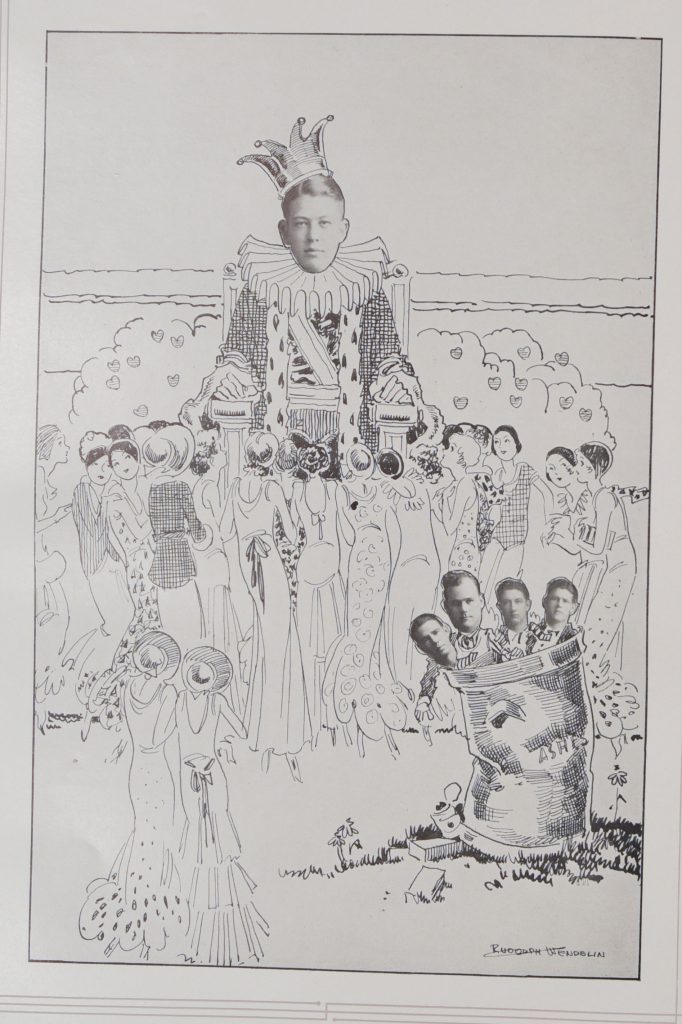
Rudolph Wendelin was also an accomplished sculptor. Early in his career, he used bars of Ivory soap to hone his craft. Rather amazingly, the Archives houses a collection of these tiny sculptures, dated 1929.
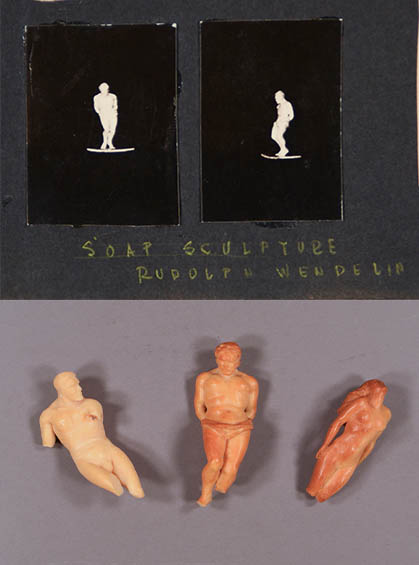
Whitney Baker
Head, Conservation Services
